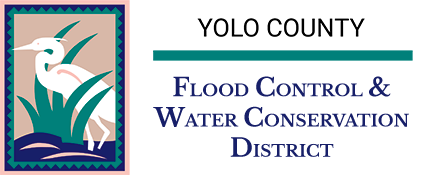Aquatic and terrestrial weeds present a major maintenance challenge to keep canals running freely and canal banks accessible. The District commits considerable resources to staff and supplies for managing aquatic weeds performing tasks such as cleaning weed-clogged trash racks, herbicide application, and removing accumulated weeds and plant matter from over 150 miles of canals. Terrestrial weeds and brush also need to be controlled and staff works hard to keep the canal banks mowed, trees trimmed, and vegetation cleared to minimize canal obstructions to keep them accessible.
Staff typically uses three methods to control weeds: herbicides, fire, and mechanical removal. Fire can be used to treat hard-to-control weeds such as fleabane, sprangletop and arrowhead by burning the seedheads when the plants are green to kill the seeds and prevent them from resprouting. Mechanical removal by excavating during non-irrigation months removes rhizomes and root systems that herbicides can’t reach. Herbicides are judiciously applied in consultation with an Agricultural Pest Control Advisor and the District’s licensed staff. All work is done conscientiously to avoid overspray that could affect nearby crops and residences during herbicide application. Wind, rain, frost, and high temperatures all affect whether or not it is appropriate to treat various weeds, so staff must be flexible in order to respond to changing weather conditions that add to the challenge of vegetation management.
The District works with Yolo and Solano County Resource Conservation Districts and the Cache Creek Conservancy to control invasive plant species such as Arundo and tamarisk in sloughs and along Cache Creek through our outside service contracts. Arundo donax is a giant reed that is problematic because it displaces native plants that provide cover and food for fish and wildlife, and it’s a water hog that consumes approximately three times as much water as native vegetation, it also incredibly flammable and helps to spread wildfire. Tamarisk also outcompetes native vegetation and uses vast amounts of water. A large tamarisk can consume 300 gallons of water per day!
